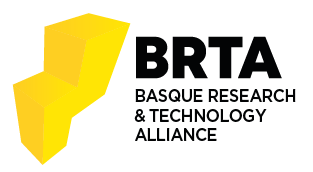Method for the Automatic Measurement of Camera-Calibration Quality in a Surround-View System
Egileak: Sanchez, Martí
Data: 01.01.2023
Abstract
Over the last decade, the automotive industry has introduced advanced driving assistance systems (ADAS) and automated driving (AD) features into roads to reduce fatality rates. One of these ADAS is the surround-view system, which provides an orthographic view of the vehicle by using at least four fish-eye lens cameras embedded in it. Small bumps or temperature changes may modify these cameras' relative poses leading to some geometrical mismatches between views in the top-view projection plane. In addition, terrain irregularities may misalign the orthographic view with the ground plane surface. Both problems can be solved by reestimating the relative poses of the cameras with respect to a single common point in the vehicle. This procedure, also known as recalibration, is offline performed in technical garages, or by online calibration mechanisms on engine start. However, it is a slow and cumbersome process. Research to date studies how to optimally recalibrate these cameras in an online manner, neglecting the practical aspects of when this procedure should be undertaken. Therefore, depending on the functionalities for which the embedded cameras are required, a compromise between using out-of-calibration cameras and the consequences derived from the recalibration process must be considered. This would prevent reestimating the cameras’ relative poses in situations where misalignment between adjacent cameras may not be noticeable. For this reason, a novel approach that measures the degree of calibration between cameras embedded in a vehicle is proposed. This method extracts relevant features from the predefined regions of interest of each camera by using the histogram of oriented gradients (HOG) descriptor. Then, features that belong to adjacent cameras are compared by employing the cosine similarity metric. The proposed method is evaluated on the open-source AD research simulator CARLA providing detailed analysis to objectively highlight the usefulness of this method in studying the degree of calibration of a camera array in a surround-view system
BIB_text
author = {Sanchez, Martí},
title = {Method for the Automatic Measurement of Camera-Calibration Quality in a Surround-View System},
pages = {9},
keywds = {
ADAS; CARLA; cosine similarity metric; extrinsic camera calibration; HOG descriptor; surround-view system
}
abstract = {
Over the last decade, the automotive industry has introduced advanced driving assistance systems (ADAS) and automated driving (AD) features into roads to reduce fatality rates. One of these ADAS is the surround-view system, which provides an orthographic view of the vehicle by using at least four fish-eye lens cameras embedded in it. Small bumps or temperature changes may modify these cameras' relative poses leading to some geometrical mismatches between views in the top-view projection plane. In addition, terrain irregularities may misalign the orthographic view with the ground plane surface. Both problems can be solved by reestimating the relative poses of the cameras with respect to a single common point in the vehicle. This procedure, also known as recalibration, is offline performed in technical garages, or by online calibration mechanisms on engine start. However, it is a slow and cumbersome process. Research to date studies how to optimally recalibrate these cameras in an online manner, neglecting the practical aspects of when this procedure should be undertaken. Therefore, depending on the functionalities for which the embedded cameras are required, a compromise between using out-of-calibration cameras and the consequences derived from the recalibration process must be considered. This would prevent reestimating the cameras’ relative poses in situations where misalignment between adjacent cameras may not be noticeable. For this reason, a novel approach that measures the degree of calibration between cameras embedded in a vehicle is proposed. This method extracts relevant features from the predefined regions of interest of each camera by using the histogram of oriented gradients (HOG) descriptor. Then, features that belong to adjacent cameras are compared by employing the cosine similarity metric. The proposed method is evaluated on the open-source AD research simulator CARLA providing detailed analysis to objectively highlight the usefulness of this method in studying the degree of calibration of a camera array in a surround-view system
}
isbn = {978-151066618-4},
date = {2023-01-01},
}







